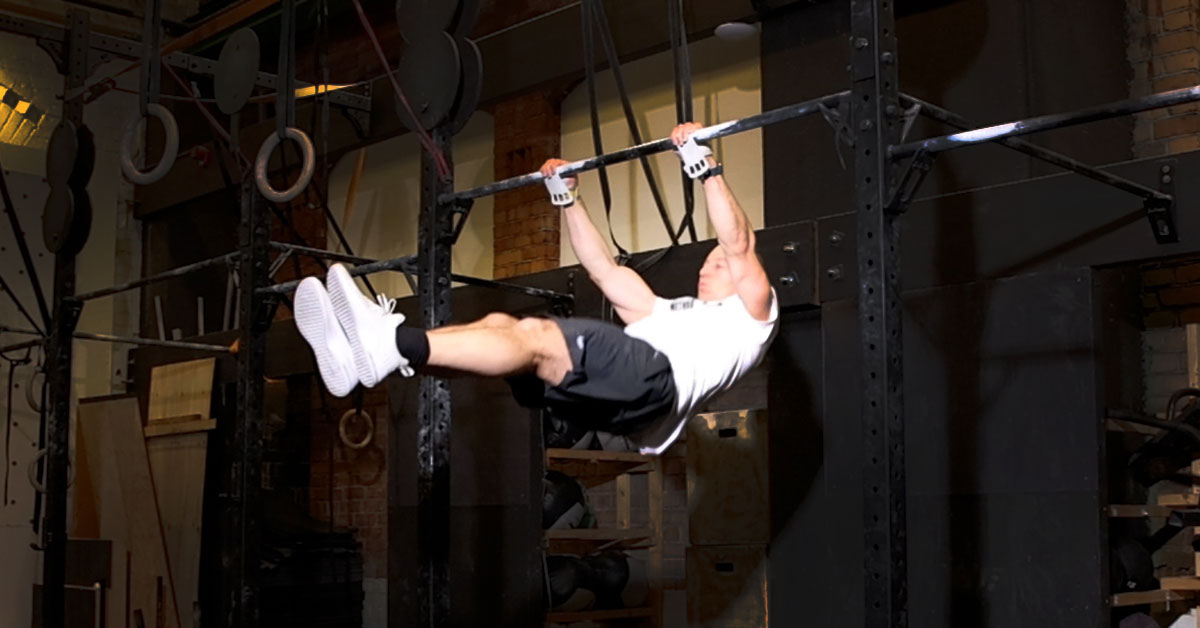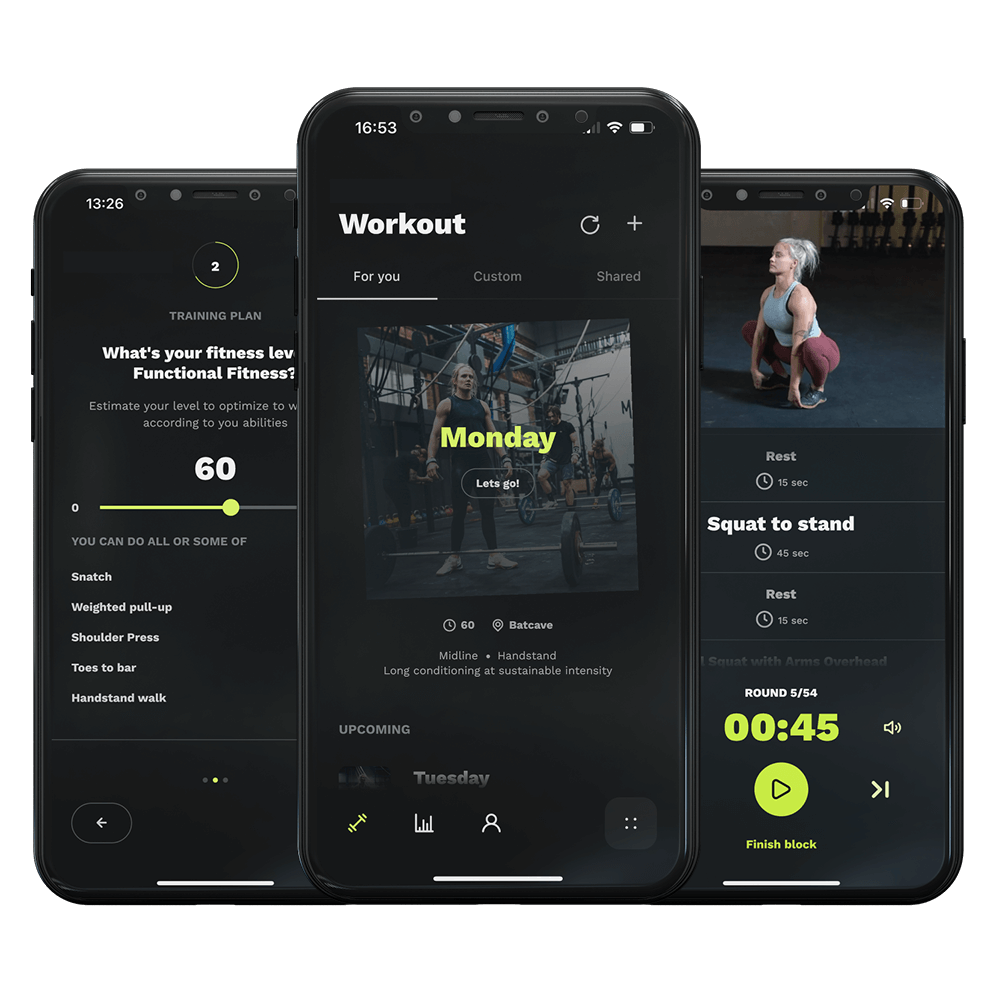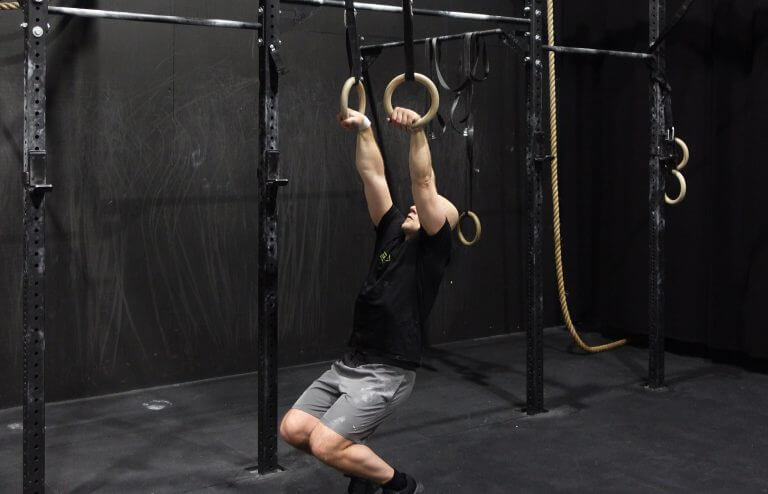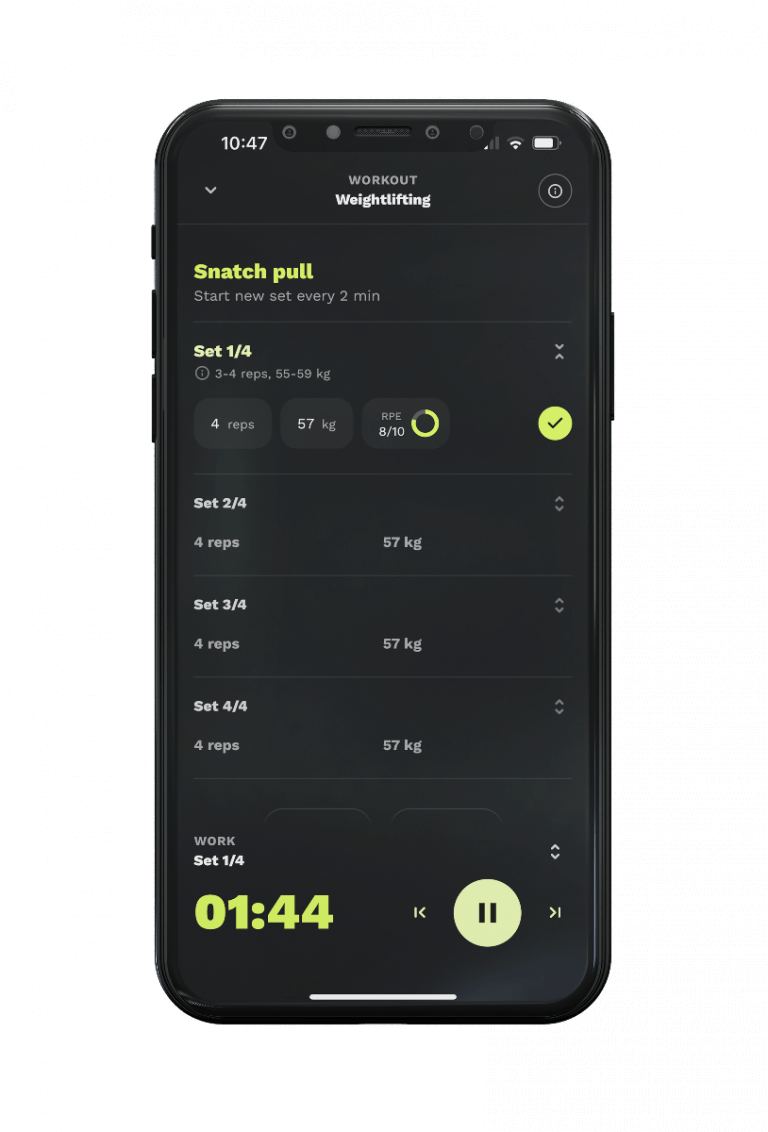When done right, the bar muscle-up looks so easy. We’ve all been standing there down on the gym floor, looking up with envy on those who seemingly effortless can rip off a big set of BMU in a wod.
But like everything else, getting the BMU is a matter of practice, practice, practice. And I can show you how to get started.
I’d highly recommend you to read the articles about Mastering the Pull-up and Mastering the Toes-to-bar since a lot of the foundations from those movements are required to master the BMU.
1. Master the basics
This is one of my mantras since it cannot be said enough. Over and over I need to regress clients into easier exercises to understand the task at hand.
Analogy: You should master a solid Hang snatch prior to Snatching from the floor.
Basics are methods and principles that can influence everything else in the same genre of movements. For instance: becoming a master of the beat swing is so often overlooked and is just something that people progress past and thinks “I got this, let’s move on…”
No! You are never done with basics.
Let it sink in. You should be practicing some basics every session in your entire life.
2. Strength requirements
There is no real science behind what kind of strength is needed to get a bar muscle-up, but I have noticed that athletes having 5 or more strict pull-ups have an easier time getting it.
You need lat, some biceps and triceps strength to mention some. You need power in your kipping pattern, so the hip flexors and abs are definitely in play here.
You should be able to perform single bar dips in full range of motion since that is both an indicator of your strength and mobility. If your bar dips are insufficient you will chicken wing the exercise, you will not achieve mastery and risk getting injured.
3. Technique requirements
I think that 10 good form kipping toes-to-bar, which are derived from the understanding of a solid beat swing, is a good starting platform in developing a bar muscle-up. When I mean solid I mean something like this:
Exercises
Now lets go through some exercises that you will benefit a lot from by understanding.
Box assisted bar muscle-ups
This piece helps you understand some of the transition part of the bar muscle-up. It will also reduce your fears about what is going to happen once you get around and above the bar. Believe me, this is no small thing!
Choose a box height so it is a notch challenging to get over the bar.
Single bar dips
You need the capacity to perform single bar dips to be able to perform the transition without fear and avoid chicken winging the bar muscle-up.
A common mistake when practicing this movement is forget to initiate it with high hips. Let the hips rise, then bend the arms or you will have the wrong angle and too little range of motion.
Band assisted bar muscle-ups
I am not a very big fan of placing the band under the feet. I do prefer attaching the band above to make the movement more technical in line with the real thing. Choose a band where you can perform three solid bar muscle-ups which would impress me. No chicken winging allowed.
With some time you might be able to reduce the band toughness and still get three or perform one or two technically perfect bar muscle-ups. I have put two version of videos in the bottom. I prefer the second one.
Keys:
- Tight kip, lat intense
- Be patient with the arm bend
- Feet high is excellent as long as you can come back
Bar muscle-ups between boxes
Nailing this piece is what will get you close to the real thing since it only helps you get momentum for the kip.
Arrange two boxes so you can stand on them and grab the bar in a good hollow position. Without hopping or changing posture just release the feet, gather them and swing into a strong arch which you forcefully reverse.
Be patient about when to pull with the arms. When the arms bend the power ends and it is the most common problem in getting solid bar muscle-ups.
Pull when the hips are right under the bar. If you pull before that, you will only pull your chest into the bar.
Front lever
Front levers are not very commonly performed in the Functional Fitness sphere but I think they are excellent in both building awareness of how to activate the lats and are excellent hanging core exercises. They are also great allround-fitness developers and I believe a strong scapula-girdle will help you stay out of kipping related injuries.
For this reason I include them in my training plans.
Tuck front lever
The tuck is a reasonable variation for this strength level. Pull back with the lats like the video then ball-up into a Tuck. Now make sure that you push yourself as far back as possible instead of just passively hanging under the bar. Your lats should burn.
Straight arm banded bar muscle-up
Here I give you final exercise to refine that feel of when to pull around the bar. This exercise is nowhere to be found on the web and is a product of my realisation of that all these gymnastic movements basically just are straight arm lat pull-downs.
Place a medium sized band across a rig and attached to j-cups or similar at approximately arm pit height.
It will give you a good range of motion. Keep the body as rigid as possible. Use the lats to push hard into the bar before you even think of bending the arms.
This will push you back and lets you practice the timing of when to pull around and over.
The bar muscle-up

Look at the picture above. That is the point when I start to pull with my arms.
Watch this final video of the Bar muscle-up in slow mo to get a final feel for it.
Notice that it’s basically just a really big beat swing which transitions into the rise of the hips.
Did you get it?
Hopefully you have now understood the foundation of the third kipping gymnastic movement Bar Muscle-up. Now you need some practice to get it!
If you want to ask me anything just shoot an email to hello@relentlessmethod.com








